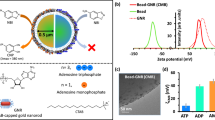Abstract
SPECIFIC adhesion of sponge cells, such that only the cells of a single species will adhere together, has been claimed by many workers1–3. Indeed, the particular specific behaviour which has been reported3 for mixtures of cells from pairs taken from Haliclona occulata, Halichondria panicea, Microciona prolifera and Clione celata has been regarded as one of the most remarkable examples of specific adhesion or cell recognition, Sara4–6 has tested combinations of other species of marine sponge for specific adhesion without success. In all work on sponge cell aggregation, the recognition of the species type of the cells in the aggregates has depended on subjective observation of the colour of the aggregate. I find this criterion defective, for it is extremely easy to fail to observe a small proportion of cells of one colour and species type scattered in a mass of cells of a different colour and species type. Furthermore, only a proportion of the cells of highly coloured sponges may carry the pigment distinctive of a species, so that it is uncertain what happens to the unpigmented cells.
This is a preview of subscription content, access via your institution
Access options
Subscribe to this journal
Receive 51 print issues and online access
$199.00 per year
only $3.90 per issue
Buy this article
- Purchase on Springer Link
- Instant access to full article PDF
Prices may be subject to local taxes which are calculated during checkout
Similar content being viewed by others
References
Wilson, H. V., J. Exp. Zool., 5, 245 (1907).
Galtsoff, P. S., Biol. Bull., 45, 153 (1923).
Humphreys, T., Devel. Biol., 8, 27 (1963).
Sara, M., Boll. Zool., 33, 1067 (1965).
Sara, M., Lian, L., and Melone, N., Nature, 210, 1167 (1966).
Sara, M., Lian, L., and Melone, N., Nature, 210, 1168 (1966).
Curtis, A. S. G., Sym. Zool. Soc. Lond., 25, 335 (1970).
Curtis, A. S. G., and Hocking, L., Trans. Farad. Soc. (in the press).
Curtis, A. S. G., J. Embryol. Exp. Morph., 23, 253 (1970).
Curtis, A. S. G., J. Embryol. Exp. Morph., 22, 305 (1969).
Swift, D. L., and Friedlander, S. K., J. Colloid Sci., 19, 621 (1969).
Snedecor, G. W., and Cochran, W. G., Statistical Methods (Iowa State Univ. Press, Ames, 1967).
Roth, S., Devel. Biol., 18, 602 (1968).
Author information
Authors and Affiliations
Rights and permissions
About this article
Cite this article
CURTIS, A. Re-examination of a Supposed Case of Specific Cell Adhesion. Nature 226, 260–261 (1970). https://doi.org/10.1038/226260a0
Received:
Issue Date:
DOI: https://doi.org/10.1038/226260a0
This article is cited by
-
Role of Different Sponge Cell Types in Species Specific Cell Aggregation
Nature New Biology (1971)
-
Species Specific Aggregation of Dissociated Sponge Cells
Nature (1970)
Comments
By submitting a comment you agree to abide by our Terms and Community Guidelines. If you find something abusive or that does not comply with our terms or guidelines please flag it as inappropriate.



